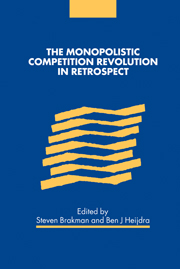Book contents
- Frontmatter
- Contents
- List of contributors
- Preface
- 1 Introduction
- Part I Underground classics
- Part II Current Perspectives
- Part III International trade
- Part IV Economic geography
- 10 The core–periphery model key features and effects
- 11 Globalisation, wages and unemployment: a new economic geography perspective
- 12 Empirical research in geographical economics
- 13 The monopolistic competition model in urban economic geography
- Part V Economic growth
- Part VI Macroeconomics
- Index
12 - Empirical research in geographical economics
Published online by Cambridge University Press: 22 September 2009
- Frontmatter
- Contents
- List of contributors
- Preface
- 1 Introduction
- Part I Underground classics
- Part II Current Perspectives
- Part III International trade
- Part IV Economic geography
- 10 The core–periphery model key features and effects
- 11 Globalisation, wages and unemployment: a new economic geography perspective
- 12 Empirical research in geographical economics
- 13 The monopolistic competition model in urban economic geography
- Part V Economic growth
- Part VI Macroeconomics
- Index
Summary
Introduction
Since the 1980s, the monopolistic competition model has become very popular. It has been applied to a large number of aggregate phenomena in industrial organisation, international trade theory, economic growth and economic geography, with great success. The benchmark model has been developed by Avinash Dixit and Joseph Stiglitz (1977). Their model develops a specific form of imperfect competition, that explains the model's attractiveness, ease of use, and popularity. In particular the following characteristics are important:
Increasing returns at the firm level
Firms are symmetric
Each firm produces one differentiated product
The firm is able to set its own price
The number of firms is large, such that individual firms do not have to deal with strategic interactions with other firms
Free entry and exit drive profits in the industry down to zero.
These features of the model are attractive because ad hoc assumptions on conjectural variations are absent, and the combination of price-setting behaviour, free entry and exit in the presence of increasing returns leads to well-defined equilibria. These characteristics make the model well suited for applications in various fields.
One of the first uses of this monopolistic competition model was in international trade theory (Krugman, 1979, 1980; Dixit and Norman, 1980).
- Type
- Chapter
- Information
- The Monopolistic Competition Revolution in Retrospect , pp. 261 - 284Publisher: Cambridge University PressPrint publication year: 2001



